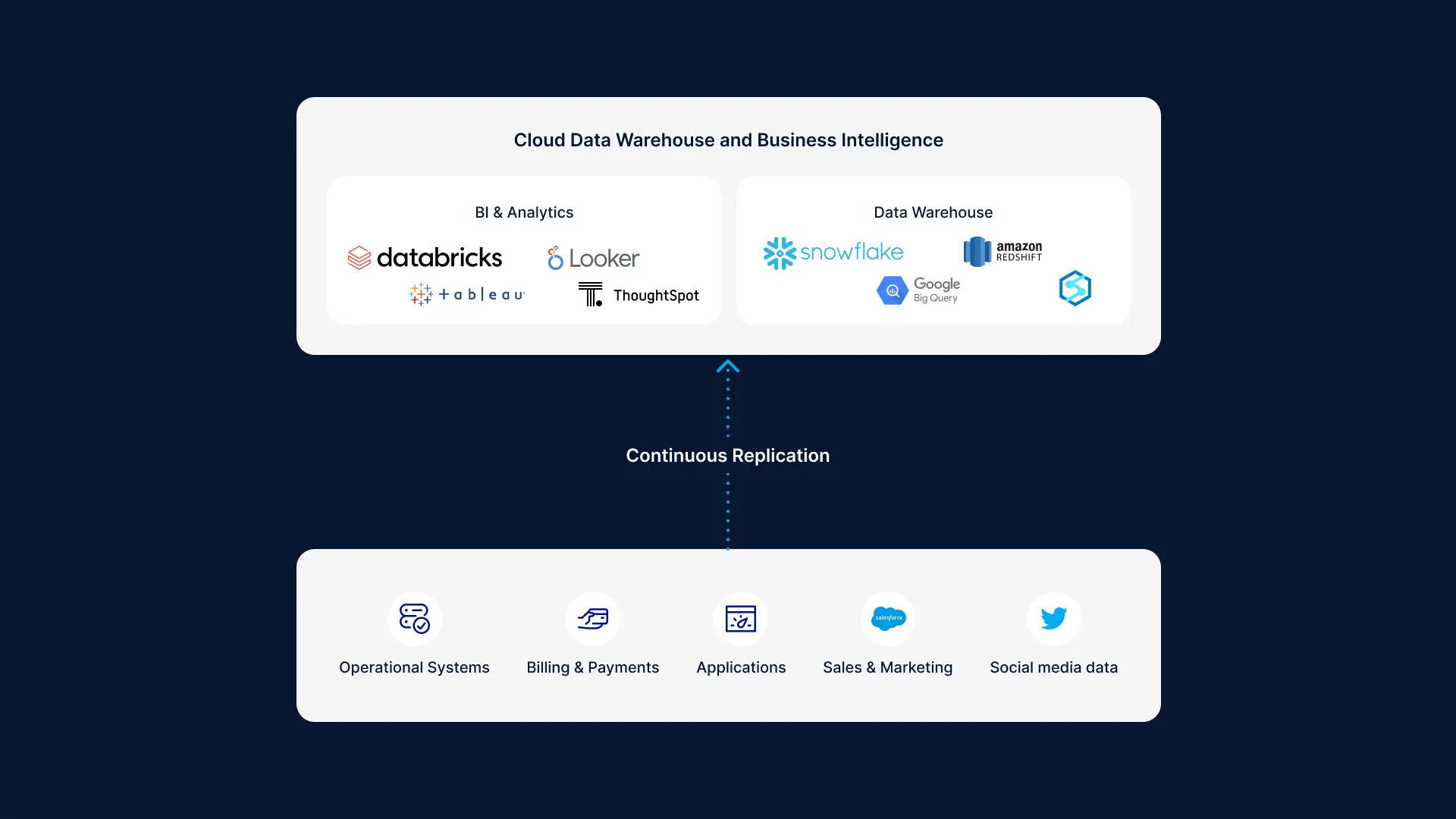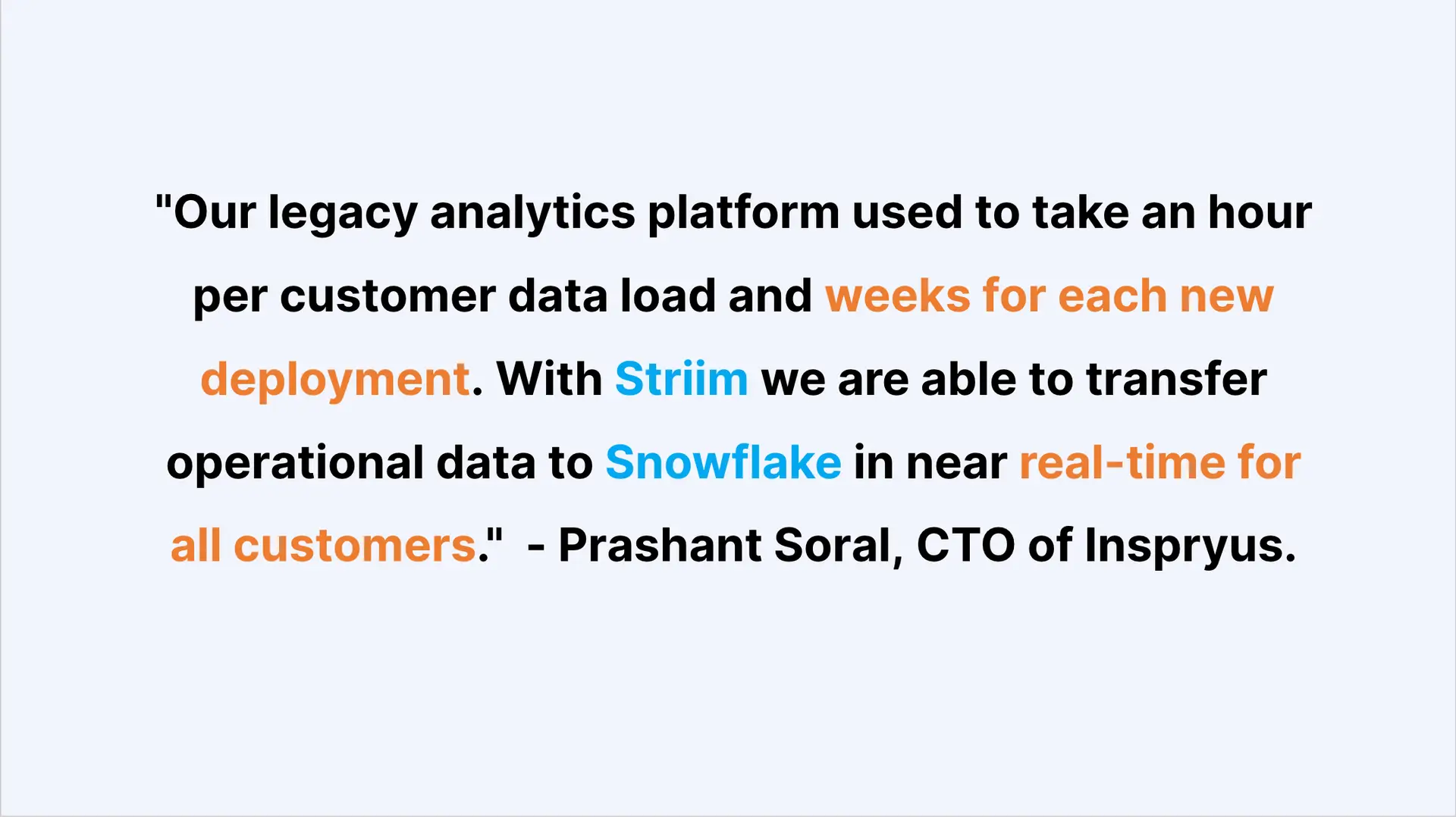Over half of the executives surveyed by Deloitte didn’t consider their businesses as insight-driven. But companies with CEOs who leveraged data in their decision-making process were almost 80% more likely to achieve their business goals. Yet many teams adopting a data-driven mindset are quickly learning they must build out their data integration architecture before scaling out their business intelligence operations.
Business intelligence (BI) tools play a vital role in becoming a data-driven company. They enable companies to derive insights from historical and real-time data. But BI data sources are growing in complexity and volume, making it more challenging to analyze information.
Enter data integration (DI) platforms. DI platforms create a unified view of data that BI software can then access to produce business insights. And companies can choose from a variety of DI approaches and deployment options.
What is business intelligence?
Business Intelligence or ‘BI’ is the process of collecting, cleaning, analyzing, and turning business data into actionable insights. BI relies on descriptive analytics to answer the questions “what”, “how”, and “when” so you can better understand why a business-related event happened or is happening. These insights are typically provided through reports and dashboards.
BI shouldn’t be confused with data science that uses data mining, machine learning, and other techniques to answer “why” an event happened and make computational predictions. Imagine, for instance, that you’re running an online clothing store. BI can inform you that sales in a specific region have doubled in the past 30 days, while data science can can identify spending habits or sentiment of certain customer segments.
Popular tools for building business intelligence dashboards include Looker and Tableau.
Why BI needs data integration
BI tools require access to various data sources to be effective. Today’s organizations collect data from websites, IoT devices, machines, customers, and many other external sources. Data then gets stored in customer relationship management (CRM), enterprise resource planning (ERP), and a range of other cloud-based and on-premises systems.
BI tools that analyze data from only some of these sources aren’t helpful. And waiting days, weeks, or even months to make sense of information is unacceptable as well. Market opportunities quickly pass by. What BI tools need are effective data integration solutions that continuously deliver data in a consumable format. With reliable and timely access to information, BI tools can then provide much-needed insights.
It’s also worth noting that most business intelligence tools leverage data warehouses to store and retrieve data used for analysis. Data warehouses such as Snowflake maximize business intelligence operations by offering a scale, cloud platform to analyze data.
On the other end, Google BigQuery’s close integration with Looker also accelerate BI team operations.
With all the above options available to business intelligence teams, they must leverage data integration to bridge the gap between operations, data warehouses, and business intelligence.
How to deploy data integration in a business intelligence architecture
There are two high-level approaches to set up data integration in a cloud business intelligence infrastructure.
The first is a manual approach, in which you access various sources and accounts to collect necessary data, clean it up, and insert it into a warehouse.
The other is an automated approach to data integration. Cutting-edge integration platforms can access data from various sources and load into business intelligence systems in real-time . These platforms can also clean and transform data, purging it of errors that would prevent it from being easy analyzed by a BI tool.
Automating data integration has various benefits. For one, this process is more reliable and consolidated than manual integration. Automation also reduces data silos by connecting otherwise incompatible systems. And with data available in a single location, you can discover opportunities and threats faster and stay one step ahead of the competition.
How data integration scales business intelligence
Robust BI tools are an essential asset to any data-driven organization. Fed with a continuous stream of data integrated from various sources, these tools help companies in many different ways.
For one, BI provides actionable insights that help users make better business decisions. BI makes it easier to discover inefficiencies and increase productivity. And if empowered with near real-time data integration tech, BI solutions can deliver real-time reporting and help companies continuously refine their marketing, sales, and production strategies. As a result, customers are provided with ever better services and products.
Real-time data integration can also help companies speed their business intelligence operations by continuously replicating all their data to their respective cloud BI tool. While traditional data integration tools can slow down business intelligence operations, real-time data integration platforms allow companies to accelerate their insights.
“Our legacy analytics platform used to take an hour per customer data load and weeks for each new deployment. With Striim [Real-Time Data Integration Platform] we are able to transfer operational data to Snowflake [A Cloud Data Platform] in near real-time for all customers,” says Prashant Soral, CTO of Inspryus.
Another example is a global retail company that wants to analyze their sales. Its products are sold through thousands of stores around the world. The company wants to continuously track and analyze sales figures, register transactions, and inventory levels. One way to go about that is to use data integration tools to create data flows to the system that is then accessed by BI tools. These tools help the company make sense of sales, transactions, and inventory data.
Or consider a coffee chain that wants to analyze and drill into receipt or sales data from thousands of its stores. An IT team can use data integration platforms to transmit data from each restaurant to a centralized location. Analysts can then apply BI tools to this dataset and cross-reference data with other relevant metrics, such as monthly recurring revenue or marketing campaigns, to gain further insights.
Data integration methods in business intelligence
On a more granular level, automated data integration in BI architecture can be performed using a number of integration methods. Companies can choose methods that best fit their unique business requirements, including:
Data consolidation: Data is combined from different sources to create a centralized data store that’s then used for reporting and analysis purposes. The goal is to reduce the number of data-storage systems. Platforms like Striim can provide data consolidation in real-time regardless of workload scale.
Data warehousing: Data is loaded into a data-warehouse architecture that scales fast reporting, BI, and other types of queries. Data warehousing allows you to discover data patterns quickly.
Data virtualization: An abstract layer of data is created, combining data from various source systems. Although users can view data in a single place, it is not stored at that site and remains a virtual structure without any physical movement.
Data propagation: Data from a data warehouse is transformed and then transferred to various data marts. Data updates happening in the warehouse are pushed into data marts synchronously or asynchronously.
Scale Business Intelligence by scaling data integration first
Today’s companies produce huge volumes of data. From sales to customer service to marketing, every department contributes to an ever-growing pool of data. But conducting effective business intelligence requires using DI platforms that bring disparate types of data into a unified environment. Only then can companies get actionable insights. And as the volume and variety of data keep rising, combining data integration and BI technologies will become ever more important.
























